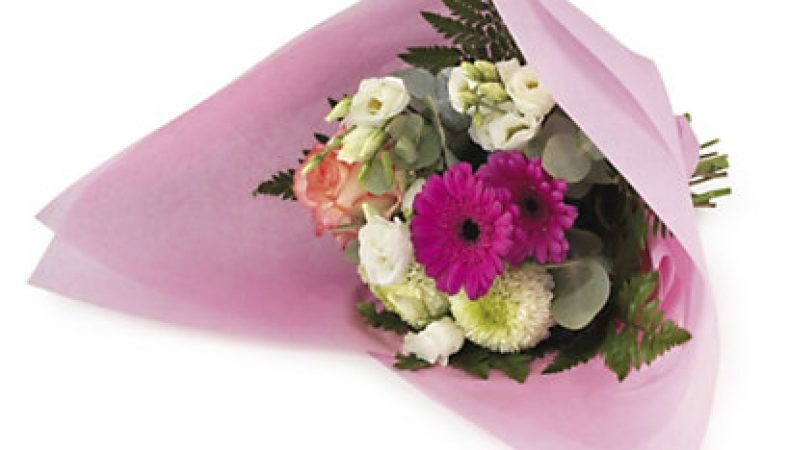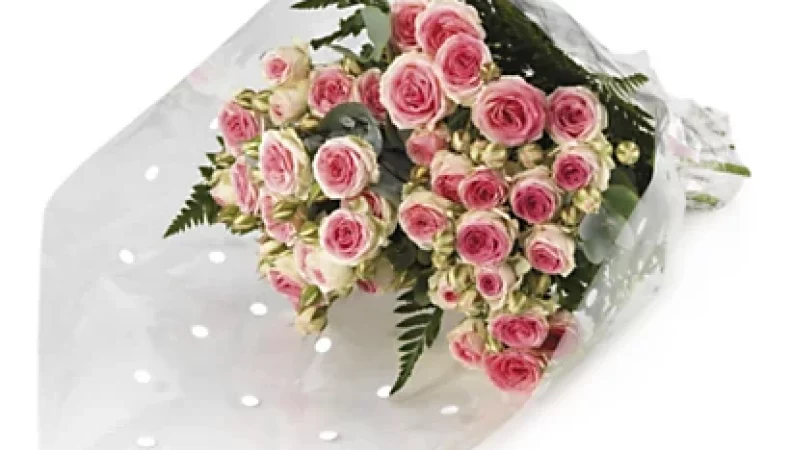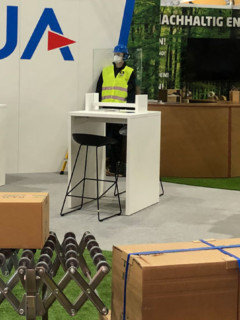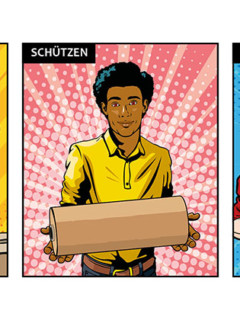Online retailing in Germany climbs new peaks every year. Packaging plays the role of the “hidden champion”: nothing works in e-commerce without it. Optimal product protection remains one of the central requirements for packaging in the mail order business.
In future, however, it will be even more important to find the right balance between product and environmental protection.
At E-Commerce BBQ in Bielefeld last Friday, we therefore talked about one of the topics close to our hearts: Why is sustainable packaging the future concept for successful online trade?
And because the topic is so close to our hearts, we would like to share it here with all those who could not be there last Friday. We have compiled the facts for you here in the blog.
Packaging must be
Do you sell your goods online? Then it is not an option to leave out the packaging or padding altogether. A product that arrives damaged is not well received by the customer, both literally and figuratively. So it’s not good for your image, but it’s not good for the environment either: returns and re-shipping mean an additional burden on the environment and your wallet. So the challenge is to strike a balance between product protection and environmental protection, while not losing sight of the core tasks of packaging:
So now these points have to be fulfilled from a sustainability point of view. Because:
In future, customers will also choose their suppliers according to the aspect of sustainability. According to a PwC survey, sustainable packaging is important to 85% of consumers. Already 52% are specifically looking for products with environmentally friendly packaging. And this is a development that is tantamount to a green revolution. Because in the future, only those retailers who invest in the topic of sustainable packaging will do good business!
How does sustainable packaging work? The 5Rs:
There are 5 principles for sustainable packagingthat we want to give you that already show good potential for optimisation in terms of sustainability.
The rule that applies to all shippers is THE rule par excellence, the one that stands above everything else:
Principle No.1: Reduce
According to a 2018 Forbes study, 60% of shipments contain more than 25% empty volume. When shipping spare parts, the content of the goods was even only one per cent – the remaining 99 per cent consisted solely of filler material. The goal must be to choose the right packaging for your product, i.e. packaging only as large as necessary and with just enough cushioning protection to ensure your goods arrive safely. This is the be-all and end-all. There are plenty of bad examples with huge packages full of air.
We Germans in particular are certainly not pioneers when it comes to waste avoidance. According to the Federal Environment Agency, we produce 220 kilos of waste per capita every year, making us the record holder in Europe. And a large part of this is caused by packaging. The Packaging Act (VerpackG), which has been in force since January 2019, represents a small step in the direction of Environmentally friendly packaging. A key point here is the licensing of packaging aimed at private end consumers. For packaging that is difficult to recycle, the licensing costs are higher than for natural materials, for example. This is an incentive for companies to use less and above all environmentally friendly packaging.
Therefore, the trend is towards variable-height cartonswhich adapts to the product size and thus reduces the filling material, or towards very specific book packaging and fixation packaging, which make cushioning material superfluous.
Product size = packaging size?
Hardly any online retailer has only one product on offer. And where different product sizes and quantities are traded, it makes sense to use different packaging sizes. The ideal situation is to have the right packaging for every product size. The reality is often different: A computer mouse is often shipped in a box that would otherwise contain a complete computer.
This happens more often than one might think, especially in smaller online shops. The reason lies in the logistical challenge. The more products of different sizes there are in the range, the more packaging sizes are needed. This in turn requires a larger storage area.
That is why online retailers often use one-size-fits-all packaging. As a result, the carton is significantly larger than the contents. However, the larger packaging results in additional costs and more packaging waste: because to protect the product, filling material made of paper, bubble wrap or packaging chips are filled into the cavities. There is another way.
Solution approaches for precisely fitting packaging
- With height variable cartons there are 13 different sizes to choose from, which can be adjusted to five different heights. The creases are pre-cut at the different heights and can simply be cut in at the desired height. This means you always have the right size in stock without having to store different sizes.
- telescopic boxes also adapt to the contents. The base and lid are supplied separately, which allows flexible adjustment of the filling height. The boxes are suitable for everything that fits into the DIN formats A4 or A5.
- However, if the product has a format that is not commonly used, there are tailor-made cartons a solution: the size and requirements of the box are clarified, a sample is created and then the very individual box goes into production.
- The Bonnet shrink machine is practically part of the basic equipment of online retailers. With its help, they can produce precisely fitting packaging themselves. Shrink-wrapping and shrink-wrapping are done in just one step. The areas of application are very diverse. The film offers protection against soiling during storage and transport of the products, and at the same time products can be bundled well. The high gloss of the film even enhances the value of the packaged product. Besides print products, DVDs, blue-raus or software are known to be suitable for film packaging.
Everyone wins here:
Lower packaging costs, lower postage costs and, thanks to better utilisation of transport vehicles, also lower CO² emissions. RAJA constantly adapts the assortment to the postage-specific sizes of Deutsche Post, DHL, UPS & Co.
Postage optimised shipping This goes hand in hand with sustainable shipping.
Nevertheless: padding is a must in many cases. If your item arrives broken at the customer’s, returning and resending it is not only undesirable from an environmental point of view. The positive image you have built up up to that point is gone.
Principle No. 2: Reuse
- Use packaging with multiple uses, e.g. those that are suitable for both outbound and return shipment, such as. resealable paper bags.
- Add value to the packaging. For example, you can print a QR code with additional info or product videos etc. to give it a purpose besides product protection. Personalise your packaging to make it a brand ambassador. Personalised packaging also create a WOW effect when unpacked and remain in positive memory. You can stand out with your packaging. In an American study from 2014, 66% already stated that the packaging says how much care a retailer shows for you and your order.
- We would like to share an idea with you that is not yet practical: ¾ of the 1000 participants in a survey by PwC would approve of a reusable system for shipping packaging. 7 out of 10 respondents would be willing to pay a deposit of €2.49 on average.
However, only ¼ would actually be willing to pay more money for a product with sustainable packaging.
This can be a future concept, but it still requires a lot of development work and cooperation between shippers.
- For internal handling, it makes sense to use Stable storage and picking boxes or pallets that will last a lifetime if used properly.
Principle No. 3: Replace
This means replacing packaging with a high environmental impact with environmentally friendly alternatives that can also be recycled. Here are some simple examples of this:
- A very simple step here is to replace your PVC or PP tape with normal paper packing tape or, even better, wet tape. Both variants are also available as printed adhesive tapes.
- Some companies, for example the Otto Group, have already removed all PVC from their packaging range and replaced it.
- Cardboard edge protectors are more ecological than those made of Styrofoam and no less effective.
- In the meantime, there is strapping tape made of recycled material, bubble wrap produced in a climate-neutral way, packaging chips based on maize and the development continues…
- Not long ago, polystyrene coolers were standard. But nowadays there are some alternatives for refrigerated transport that do without Styrofoam. There is, for example. WrapPak Protector from Ranpak, whose paper pads have been proven to keep your products cool for over 18 hours. The special corrugation and layering of the paper padding keeps the cold in the package.
It gets a bit more complicated when replacing air cushioning with paper cushioning. This CAN make sense. However, it has to be checked in each individual case which products are the most suitable. Although the topic is currently polarised in the media and 92% of all consumers would be in favour of doing without plastic, plastic is not bad per se.
Rather, a distinction must be made between products that are used once and products that are durable or can be recycled. And this is also the key point for all materials: only if they are fully recyclable can they contribute to an environmentally friendly circular economy in the longrun.
Foil or paper – a question of faith
The problem is that plastic is a material that once produced exists forever. Therefore, it is extremely important to recycle plastic and reuse the material. Since this is not happening at the moment, many consumers are turning to paper. We need to encourage manufacturers to make more products from recycled materials. Properly practiced, this will be the trend of the future.
A good example is Debatin, a producer of document pouches, which partners directly with recyclers to obtain film material that they can then use to make new films for document pouches and other bags. A manufacturer that drives the circular economy. As RAJA, we prefer suppliers with environmentally friendly initiatives.
And that brings us directly to Principle No.4:
Principle No. 4: Renewal
Renewal means the use of bio-based packaging made from renewable natural materials. Here are a few examples:
- One product that is making the rounds in the media is the Grassboard. However, this remains a niche product because we cannot satisfy our hunger for paper with it either. Moreover, it does not solve the problem of not needing fresh wood. Grass paper is slightly yellowish with pieces of hay in it, but consists of max. 50% grass, the rest is normal fresh pulp. It is a temporary solution to conserve resources (like wood) and shorten transport distances.
- Wood is also a renewable raw material, not to forget. But you should look for the Blue Angel, the FSC or PEVC logo to make sure that the paper comes from regenerative forestry.
- Other bio-based solutions are, for example: packaging chips made from maize or pea starch, films made from potato starch, which is obtained from potato peelings…
There are many possibilities, but they will only benefit the environment in the long term if they contribute to the circular economy, if they do not compete with fodder crops and destroy agricultural land through monocultures. Therefore, even these means of packaging can only be a temporary solution.
Principle No.5: Recycling
One of the most important principles. The aim is, and this is independent of the material used, to achieve a circular economy. In doing so, the RAJA Group wants to be part of a positive cycle by promoting the recycling of packaging and paying attention to the recyclability of the products offered.
In Europe, already 72% of paper and cardboard recycled… a record that no other recycling industry can match! The recovered paper input ratio (the share of recovered paper in total German paper production) is around 75%!
Globally, only 14% of plastic is recycled, another 14% is incinerated, 40% ends up in landfills and the rest in the environment …
In Germany, about 45% is recycled, but only 16% is processed into recyclate, of which only 7.8% corresponds to new plastic… And this is the problem!
















